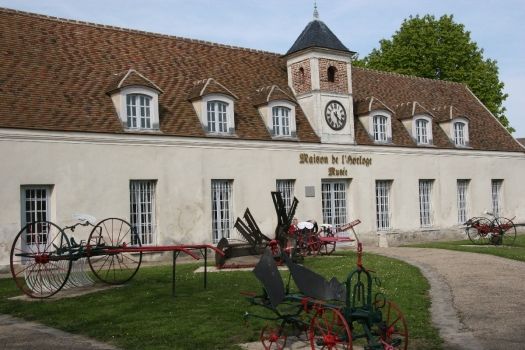
The residence of the Marquis of Montfermeil has entirely disappeared. On the other hand, the remnants of the former seigniorial farm remain. It used to be the Maison de l'Horloge and is now the Museum Charles-Peyre.
When the French Revolution proceeded to list an inventory of State property, the estimation of the assets of the seigneury of Montfermeil, established the time of the Republican calendar “19 floréal an 2” (8 May 1794) included the Maison de l'Horloge a building integrated into the central part of the castle farm. This house does indeed present a clock located in the centre of a sort of pinnacle overlooking the roof and its centre. The magnificent framework is the original one, mainly composed of chestnut wood. Apparently, according to the analysis conducted by the companions of the Tour de France “free masons” who were in charge of its restoration, it could come from an old structure dating back to the eleventh century which could have been reused.
Threatened with destruction, the building was preserved from demolition in extremis. As for the house of Bourlon and the château des cèdres, it is thanks to Emile Hovelaque (1865-1936) that the Maison de l’Horloge was preserved. General Inspector of public instruction, son in law to the Gouvernor of the state of New York, Emile Hovelaque was a lettered man with a political flair. A friend of the American president Thomas Woodrow Wilson (1856-1924), Hovelaque exerted a certain influence over the United States to enter the war in 1914. He was consulted on several occasions during the elaboration of the treaty of Versailles. In 1976, the municipality acquired the Maison de l'Horloge to set up a tourism office and a regional museum housing the tools and trades of yesteryear. In 1982, the Maison de l'Horloge was registered in the supplementary list of historical Monuments. The following year, it became Musée du Travail and the headquarters of the historical society of old Montfermeil. Restored in 1990, the Maison de l'Horloge is now the Musée du Travail Charles-Peyre, named after a local historian.